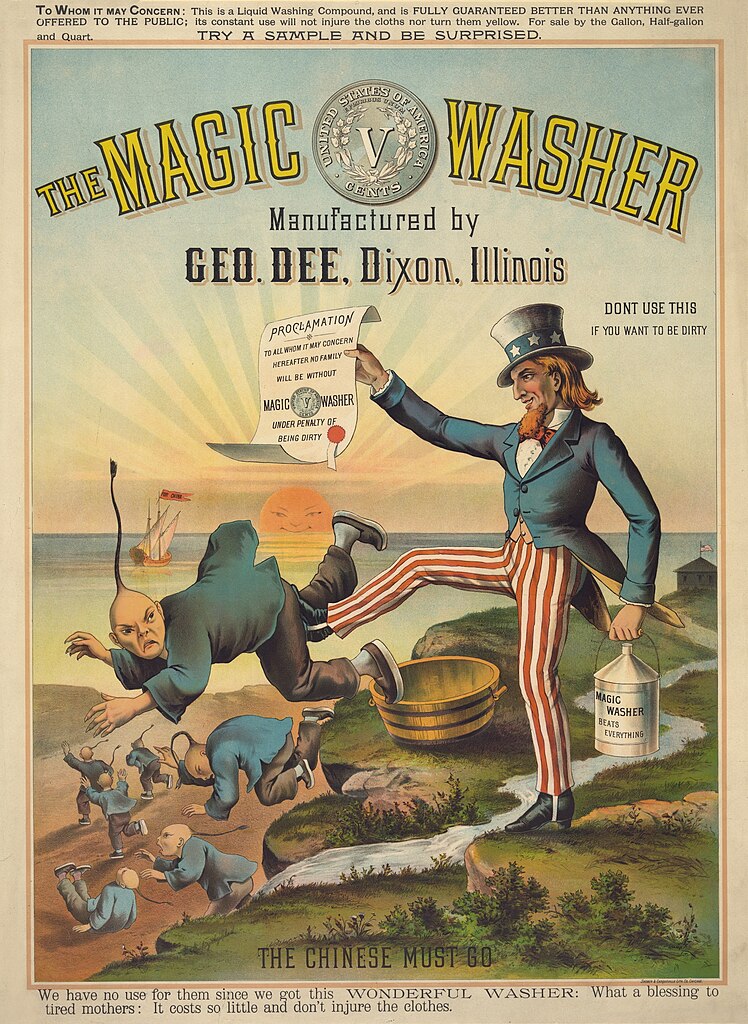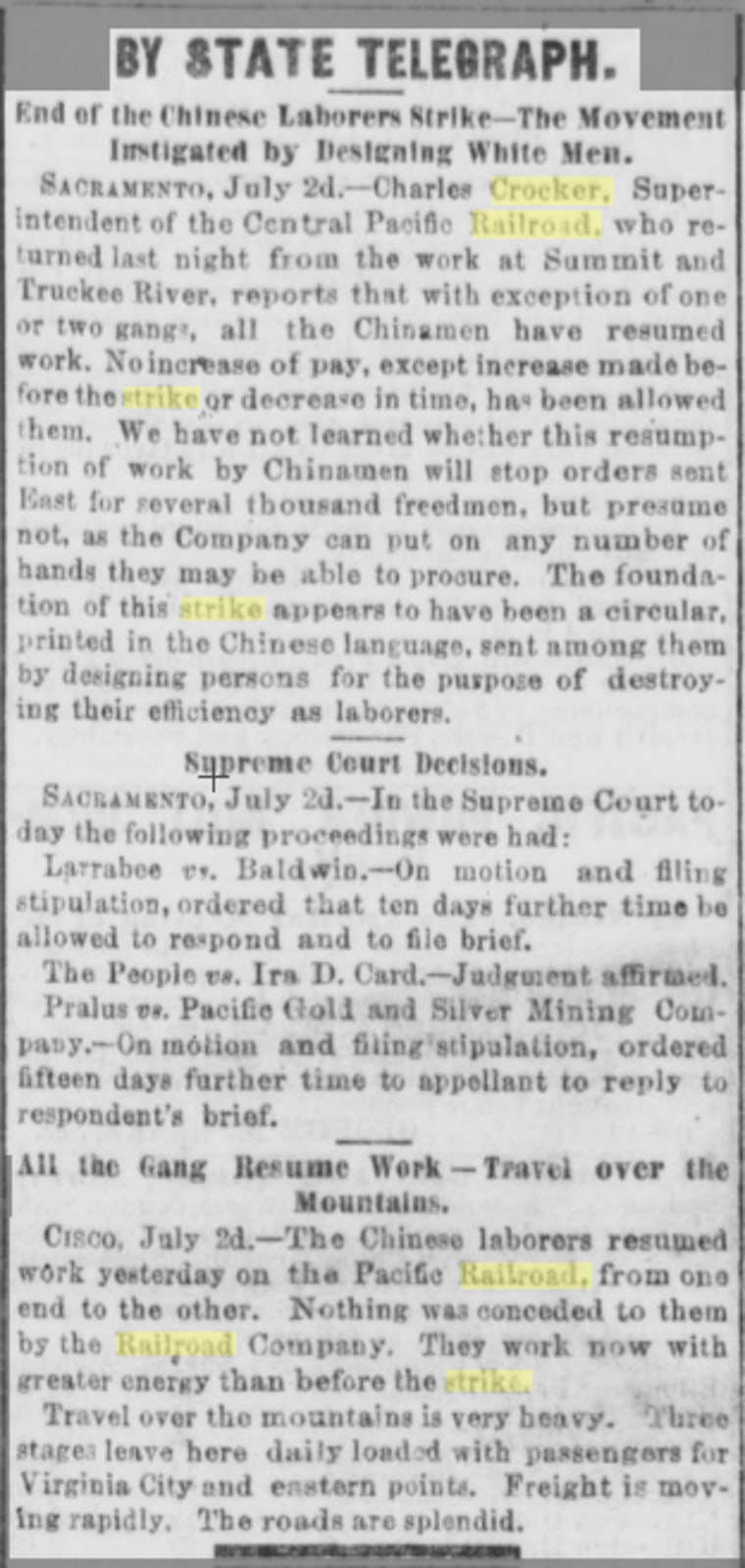Notes
Lesson 5: Challenges and Discrimination
Do Now Activity
Research images or political cartoons depicting anti-Chinese sentiment from the 19th century.Reflect on how these images make you feel and what they suggest about societal attitudes at the time.
Learning Objective
Discuss specific incidents and policies that targeted Chinese workers, such as lower wages compared to white workers, violent attacks, and exclusion from certain jobs.
Racism and Discrimination
Chinese workers on the Transcontinental Railroad faced significant racism and discrimination, which manifested in various forms, including wage disparity and violent attacks. Despite their critical contributions to the railroad's construction, Chinese laborers were paid significantly less than their white counterparts. While white workers earned around $30 a month plus room and board, Chinese workers were typically paid $26 a month and had to provide their own food and shelter. This wage disparity was a clear reflection of the pervasive racial prejudice of the time, where Chinese workers were viewed as inferior and less deserving of fair compensation.

“ The Chinese Must Go.” United States, 1886.
In addition to economic discrimination, Chinese workers were subjected to violent attacks and exclusion from certain jobs. Instances of physical violence against Chinese laborers were not uncommon, as they were often targeted by white workers who resented their presence and perceived them as a threat to job security. Chinese workers were frequently assigned the most dangerous and undesirable tasks, further highlighting the discriminatory practices they endured. Moreover, they were often excluded from skilled positions and opportunities for advancement, reinforcing the systemic barriers that limited their economic mobility and social integration.

“We must draw the line somewhere, you know.” United States, 1882.
In addition to economic discrimination, Chinese workers were subjected to violent attacks and exclusion from certain jobs. Instances of physical violence against Chinese laborers were not uncommon, as they were often targeted by white workers who resented their presence and perceived them as a threat to job security. Chinese workers were frequently assigned the most dangerous and undesirable tasks, further highlighting the discriminatory practices they endured. Moreover, they were often excluded from skilled positions and opportunities for advancement, reinforcing the systemic barriers that limited their economic mobility and social integration.
Legal and Social Challenges
The challenges faced by Chinese workers were further compounded by discriminatory laws and policies. One such law was the Foreign Miners’ Tax, enacted in California in 1850, which imposed a monthly fee on foreign miners, primarily targeting Chinese immigrants. This tax significantly reduced the earnings of Chinese laborers and added to their financial burdens. It was a clear example of institutionalized racism designed to marginalize and exploit Chinese workers.
The Chinese Exclusion Act of 1882 marked a significant escalation in anti-Chinese sentiment and legal discrimination. This federal law prohibited the immigration of Chinese laborers, severely restricting the influx of Chinese people to the United States. It also prevented Chinese immigrants already in the country from becoming naturalized citizens. The Chinese Exclusion Act institutionalized racial discrimination at the national level, reinforcing social prejudices and legitimizing the exclusion and marginalization of Chinese communities. This law had long-lasting impacts on Chinese immigrants, disrupting families, limiting economic opportunities, and fostering an environment of hostility and exclusion.
Resistance and Resilience
Despite the pervasive racism and discrimination they faced, Chinese workers and communities demonstrated remarkable resilience and resistance. One notable form of resistance was the organization of strikes to demand better wages and working conditions. In 1867, thousands of Chinese railroad workers staged a strike, refusing to work until their demands for equal pay and reduced working hours were met. Although the strike was ultimately suppressed, it was a powerful assertion of their rights and a significant act of solidarity and resistance.

An 1867 article from the Daily Alta California newspaper detailing the end of the strike.
In addition to labor strikes, Chinese communities formed tight-knit, supportive networks to withstand the challenges they faced. These communities provided social support, mutual aid, and cultural preservation, helping members to maintain their identity and resilience in the face of adversity. Chinese immigrants also pursued legal action to challenge discriminatory laws and practices. For instance, they fought against the enforcement of the Foreign Miners’ Tax and other unjust policies, using the legal system to assert their rights and seek justice. Through these acts of resistance and community support, Chinese workers and their communities demonstrated their strength, resilience, and determination to fight against discrimination and improve their circumstances.